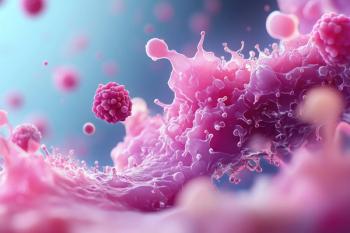
Updated Guidelines for Protecting Children From Flu
In many cases, children between the ages of 6 months and 8 years should receive 2 doses of the influenza vaccine separated by a minimum of 4 weeks.
For the impending flu season, the American Academy of Pediatrics (AAP) has updated its recommendations on the appropriate use of influenza vaccines in children.1
In 2009, 107 deaths were reported to result from influenza, nearly half (47%) of which occurred among healthy children.1
To facilitate some passive immunity in developing fetuses and to offer children aged younger than 6 months some protection against influenza, mothers should receive an influenza vaccine during pregnancy.1
According to the AAP, influenza vaccination not only prevents the seasonal flu, but also reduces antibiotic use, physician visits, and sick days. Most importantly, however, influenza immunization reduces the risk of hospitalization and death.1
The AAP’s updated recommendation reflects changes in available influenza vaccines, including an egg-free vaccine, and the availability of both trivalent and quadrivalent vaccines.1
Under the 2014-2015 recommendations, children between the ages of 6 months of 8 years should receive 2 influenza vaccine administrations separated by a minimum of 4 weeks, in many cases.* Among healthy children, the use of the live attenuated influenza vaccine (LAIV) is a viable option for those aged 2 to 8 years, though children with contraindications to LAIV should receive the inactivated influenza vaccine (IIV) instead.1
Contraindications to IIV include:
- Use in children using receiving aspirin or an aspirin-containing medication.
- Use in children aged younger than 2 years.
- Use in immunocompromised individuals, including those with conditions such as HIV and cancer.2
Although the use of LAIV is not contraindicated in all children with asthma, it has not been studied in those with severe asthma or active wheezing.2
While the AAP expressed no preference for the quadrivalent vaccine over the trivalent one, it did note that the quadrivalent version offers greater protection against influenza.1
The AAP noted that fever may occur within 24 hours of immunization in 10% to 35% of children aged younger than 2 years. Other common adverse events may include injection site reactions, such as pain, redness, and swelling. With the intranasal LAIV, common adverse events include runny nose or nasal congestion, headache, decreased activity or lethargy, and sore throat.1
LAIV has demonstrated superior efficacy over IIV in preventing influenza among children. In fact, a randomized controlled trial that examined 7852 children aged 6 to 59 months showed a 55% reduction in the risk of developing influenza among those who received LAIV compared with those who received IIV.3,4
Health care professionals should encourage all parents to get the influenza vaccine for their children. For plain-language information about the importance of vaccination as an aid in promoting community health, refer to the US Center for Disease Control and Prevention’s
*This pertains unless the child has received 1 dose of the 2013-2014 influenza vaccine, or a total of 2 doses of influenza vaccine since July 1, 2010, in which cases only 1 dose of the influenza vaccine is necessary for the 2014/2015 season. If this history of influenza vaccination is unknown, patients should receive 2 doses.
References:
1. Committee on infectious diseases. Recommendations for Prevention and Control of Influenza in Children, 2014-2015. Pediatrics. 2014.
2. FluMist Quadrivalent (Influenza Vaccine Live, Intranasal) Intranasal Spray [package insert]. Gaithersberg, MD: Medimmune; 2014.
3. Grohskopf LA, Olsen SJ, Sokolow LZ, et al. Prevention and Control of Seasonal Influenza with Vaccines: Recommendations of the Advisory Committee on Immunization Practices (ACIP) - United States, 2014-15 Influenza Season. MMWR Morb Mortal Wkly Rep. 2014;63(32):691-697.
4. Belshe RB, Edwards KM, Vesikari T, et al. Live attenuated versus inactivated influenza vaccine in infants and young children. N Engl J Med. 2007;356(7):685-696.
Newsletter
Stay informed on drug updates, treatment guidelines, and pharmacy practice trends—subscribe to Pharmacy Times for weekly clinical insights.


















































































































































































































